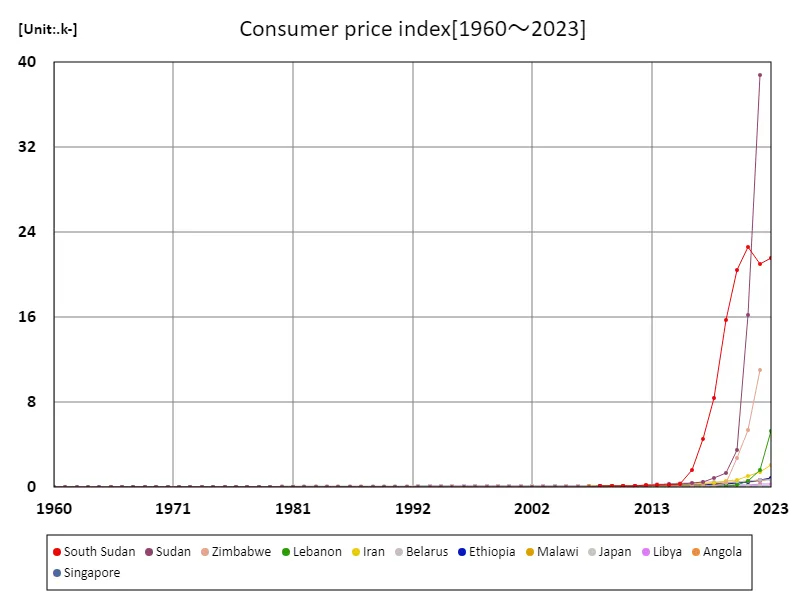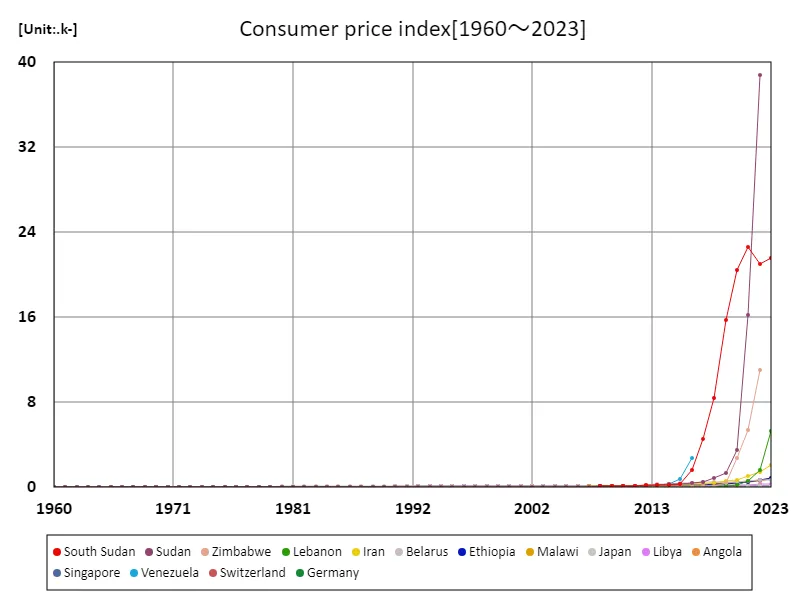Abstract
In recent years, South Sudan has experienced one of the highest inflation rates globally, with the Consumer Price Index (CPI) for 2023 reaching a staggering 21,600%. This dramatic increase reflects the country’s ongoing economic challenges, including the impact of conflict, political instability, and the disruption of its oil-dependent economy. Historically, South Sudan’s CPI has been marked by volatility, often spiking during periods of internal strife, currency devaluation, and supply chain disruptions. Such extreme inflation underscores the broader struggles faced by many conflict-affected economies.
Consumer Price Index
Sudan’s Consumer Price Index (CPI), peaking at 38,800% in 2022, highlights the country’s severe inflation crisis. This surge is driven by years of economic instability, including conflict, political turmoil, and a collapse in oil revenues. Since the early 2000s, Sudan’s economy has been marked by hyperinflation, with periodic spikes tied to internal strife and currency devaluation. The CPI’s rapid rise in recent years underscores the persistent challenges faced by Sudan, reflecting broader trends in countries experiencing economic mismanagement, resource scarcity, and social unrest.


The maximum is the latest one, 38.8k of Sudan
Consumer Price Index (Worldwide)
Sudan’s Consumer Price Index (CPI), reaching a staggering 38,800% in 2022, marks the highest inflation rate in recent global history. This extreme surge is the result of years of political instability, economic mismanagement, and loss of oil revenue following the secession of South Sudan in 2011. Sudan’s economy has struggled with currency devaluation, food and fuel shortages, and sanctions, leading to persistent hyperinflation. Trends show that periods of conflict and economic sanctions typically precede these spikes, highlighting the vulnerability of economies under prolonged distress.


The maximum is the latest one, 38.8k of Sudan
Consumer Price Index (worldwide, latest year)
In 2023, South Sudan recorded the highest Consumer Price Index (CPI) at 21,600%, a stark contrast to the global average of 396%. This extreme inflation highlights the country’s ongoing economic turmoil, driven by political instability, civil conflict, and a heavily oil-dependent economy. The CPI surge follows historical trends, where nations facing conflict and poor governance often experience hyperinflation. While South Sudan’s situation is severe, it reflects broader global economic instability, with some countries struggling to maintain stable currencies and manage inflation amidst supply disruptions and economic shocks.


The maximum is 21.6k of South Sudan, the average is 398, and the total is 58.9k



Comments